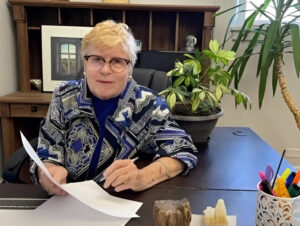Diseases of Despair, with the complex mix of substance use, opioid use, mental health issues, suicidality, and related life challenges represent a growing epidemic in the U.S. In my book, Building Communities of Hope, I try to tackle this issue head on in a number of chapters.
Diseases of Despair
In 2019, the Deputy Director of the federal Centers for Disease Control sent out an email referring to a groundbreaking study by the Brookings Institute, showing a direct and powerful correlation between people with limited education and skills, from poor communities who have lost ground in the job market with higher death rates at younger ages. The CDC Deputy, Chelsey Richards, calls this cluster of problems “Diseases of Despair.” This provides another powerful connection between the social determinants and poor health outcomes. However, it’s deeper, in that it talks about individual and collective despair, which must be addressed if we are to have hope. (Brookings Institute)
Population trends, economic and workforce trends, and social determinants create a mix of forces that shape these Diseases of Despair in our communities. When communities have significant challenges with poverty; population shrinkages over time; loss of jobs and capital; people with lower-than-average levels of educational attainment; and high proportions of racial and ethnic minorities who face inequities; those communities are at much greater risk than others. When one considers social determinants of health (SDOH), and health risk factors, some experts indicate that many communities have the “cards stacked against them.” (World Health Organization)
Hope
It’s hard to have hope when your world is falling apart and you have multiple substance use and life challenges. It’s made even tougher when you live in communities that are considered to be Distressed Communities, through decades-long losses of population, jobs and capital (Economic Innovation Group). So, how can we have hope?
There’s individual and collective hope, and it takes lots of concerted, collective action. One by one, we can focus on living mindfully, to treat one another with respect, human compassion, equity, and justice. We have much to learn. We can work together, in an intersectional way, to focus on the systemic issues that perpetuate poverty, reduce options for living wage jobs, and limit access to health and behavioral health care and resources. For some, it’s helping neighbors. For others, it’s advocacy work. When community leaders can bring groups of people and organizations together to rally around causes and goals, things get better. Maybe slowly. Often too slowly. Dr. Martin Luther King said “the moral arc of the universe bends toward justice.” He also pushed against those who said that making things better takes time. “How long? Too long.”
What can each of us do today that is our part in contributing to healthier, more compassionate, inclusive and just communities? We can offer one another hope. It’s our mutual responsibility and part of being human, I believe.


